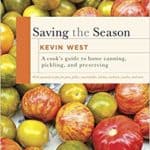
26
JulChill Out, New England
 We all know that one of the great benefits of living in New England is that we get to experience all the seasons. Our iconic foliage draws busloads of tourists every autumn, we usually get to have a white winter holiday season, and our landscape becomes furiously and gloriously alive every spring. As a result, our New England summers can feel all too brief, and many residents look forward to summer all the rest of the year.
We all know that one of the great benefits of living in New England is that we get to experience all the seasons. Our iconic foliage draws busloads of tourists every autumn, we usually get to have a white winter holiday season, and our landscape becomes furiously and gloriously alive every spring. As a result, our New England summers can feel all too brief, and many residents look forward to summer all the rest of the year.
While we’re busy bundling up for the other seasons though, we can sometimes forget just how hot and humid our New England summers can be. Heat waves seem to surprise us because they don’t happen very often in the course of a year – remember that stretch of 90+ degree heat a few weeks ago? Brutal, right? And no wonder we feel this way – in the course of June 2018 we went from chilly spring temperatures in the 40s to blazing 92F, according to AccuWeather.com. That’s a pretty big difference, especially after what seemed like a prolonged winter.
I’m fully aware that we don’t deal with nearly the temperature extremes experienced in other parts of the United States or the world. For instance, according to Weather.com the city of Quriyat in Oman in the Middle East just broke a world record for the highest low temperature in a 24-hour period, a whopping 108.7F. However, New England is quite humid, and therefore we tend to “feel” temperatures more acutely. In the course of a year, our weather changes from -40F to over 100F, with some areas of our region experiencing temperatures more extreme in either direction. From freezing pipes and frost heaves to the baking sun and high humidity, our roads and buildings have to stand up to a lot.
At this point, you’re probably asking yourself if I’m seriously writing an article about the weather. (In May she wrote about statistics and algorithms in dating apps, and this month it’s the weather? Does this lady even get out?) Fooled you! I’m actually writing about how to keep cool and comfy in the summer without air conditioning at home. On some level we’re all getting used to air conditioning in public buildings, but as long as you don’t have a health condition that necessitates cool temps, do you need to invest in air conditioning at home in the Northeast?
There are some good reasons to go without AC if you can help it. Lowering your electric bill is a good motivation, since once you turn on the AC unit there’s a strong temptation to leave it running for most of the day. The cost of an air conditioner can also be prohibitive, as well as the hassle of properly installing the unit. Also, there’s a lot of joy in hearing birdsong and other sounds of summer coming through the window, which is drowned out by the chugging of an air conditioner. Plus, there’s the principle of the matter – there’s something perverse about turning on an air conditioner for a small amount of comfort when human activity is responsible for rising global temperatures in the first place.
Passive cooling measures are easier than you think; they just take a little bit of planning. It’s an awful feeling to get to work and realize a storm is heading your way on a day you decided to leave some windows open to catch the breeze. A few easy tips include: close the shades during the day, especially on the sides of your house that catch the sun; close the windows on the sunny sides of your house, though you may decide to leave windows cracked on the shady sides of your house if cool air is blowing in; as soon as the evening temperature drops lower than the temperature inside your house, open those windows and enjoy the night breeze; use window fans to draw in extra cool night air if the day has been especially hot, making sure to crack another window to help the fan work as efficiently as possible; avoid stove or oven cooking if you can help it, and instead eat cold foods like salad or use a slow cooker to keep from heating up your kitchen. For even more practical tips for keeping cool and conserving energy, especially if you’re planning a remodel project, check out these books from the library: The Carbon Buster’s Home Energy Handbook by Godo Stoyke, The Energy Wise Home by Jeff Dondero, True Green Home by Kim McKay, and This Cold House by Colin Smith.
We have lots of cookbooks with slow cooker recipes. Browse our cookbook section on the Mezzanine level next time you’re in, and keep an eye out for titles like The Everything Healthy Slow Cooker Cookbook, The Slow Cooker Revolution, and The Chef and the Slow Cooker.
Swim, wear loose fitting clothing, eat ice cream – and when we hit a streak of 90+ degree weather and all else fails – come to the library. We have free air conditioning, and lots of books and great programs all summer long.
Liz Reed is an Adult and Information Services Librarian at the Morrill Memorial Library in Norwood, Massachusetts. Read Liz’s column in the July 26, 2018 issue of the Norwood Transcript and Bulletin.








